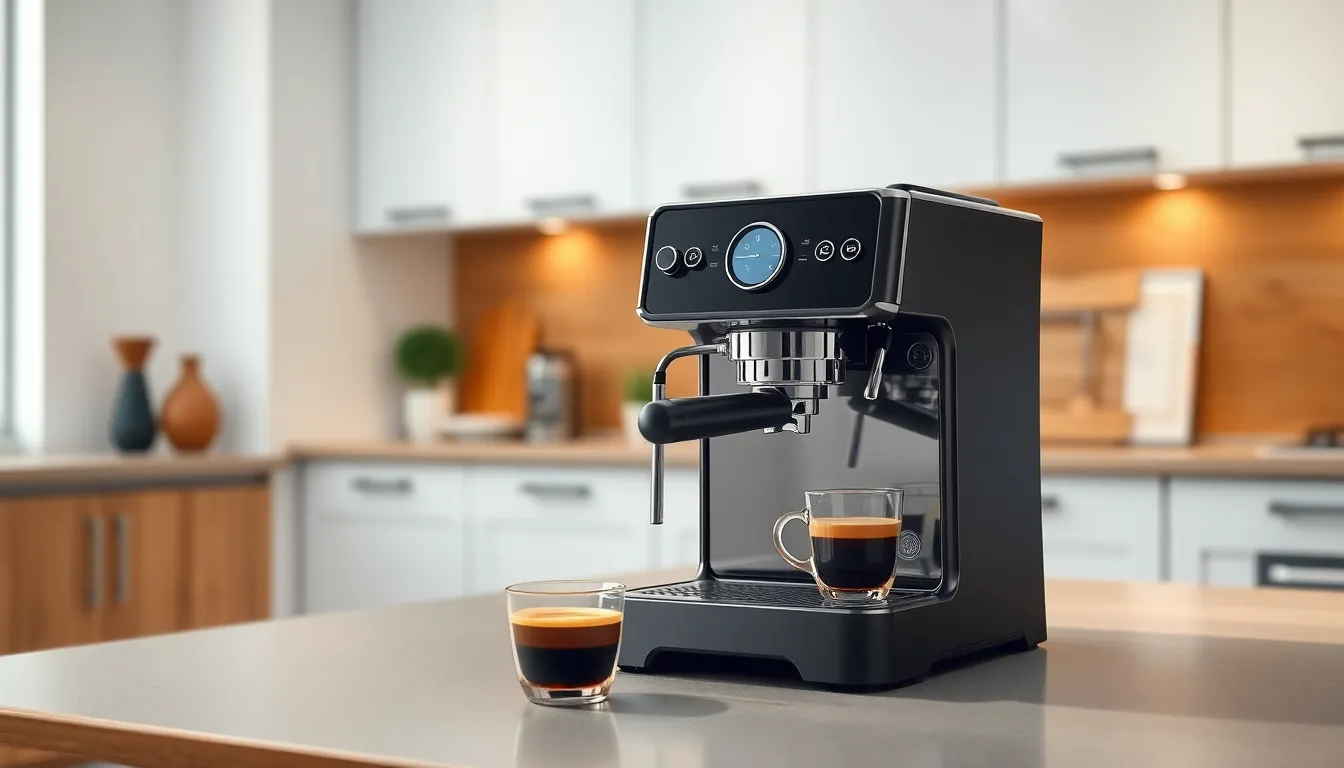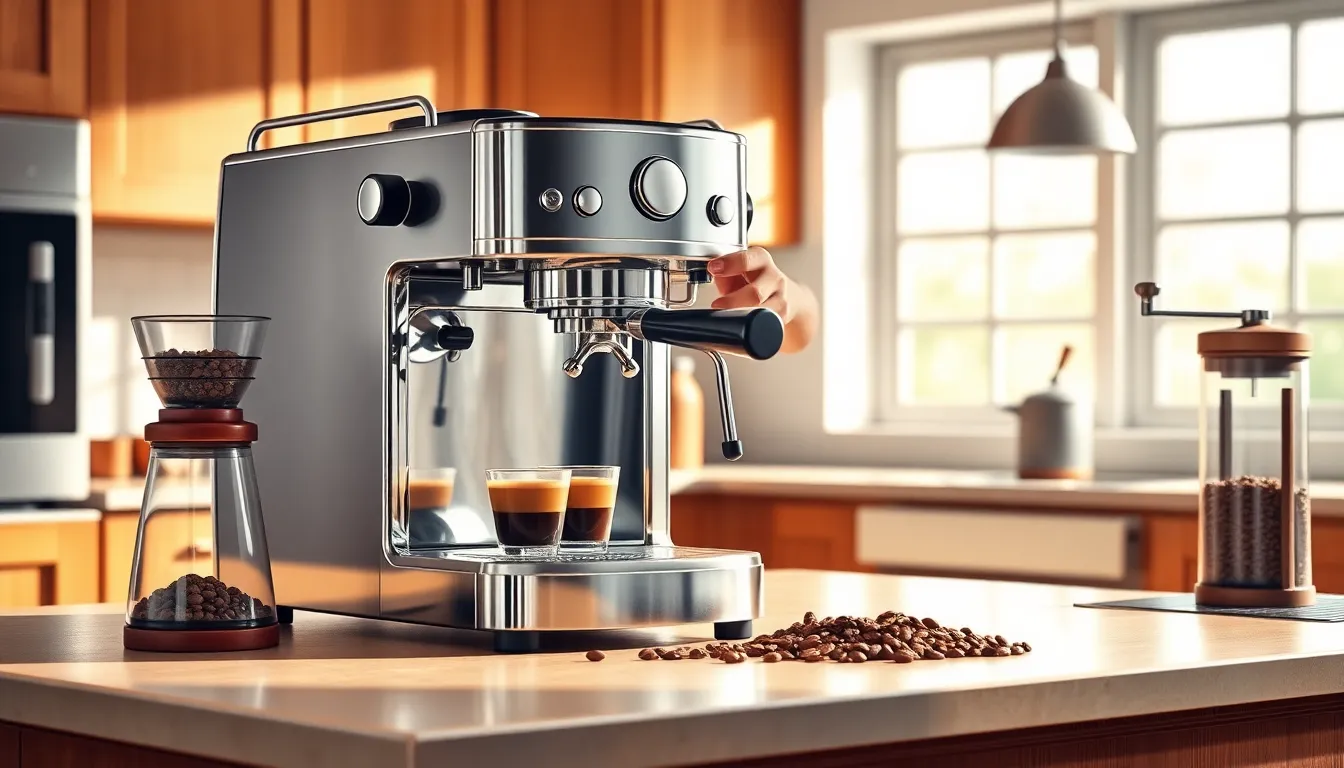For coffee lovers, an espresso machine is more than just a kitchen appliance; it’s a gateway to crafting the perfect cup of espresso. With a variety of options available, choosing the right machine can feel overwhelming. From entry-level models to high-end machines, each type offers unique features that cater to different brewing preferences and skill levels. Understanding the essentials before making a purchase can make all the difference. This guide breaks down key factors to consider, ensuring anyone can find the espresso machine that suits their lifestyle and taste. Whether it’s about budget, size, or functionality, knowing what to look for can transform the coffee experience at home.
Espresso Machine Buying Guide
Espresso machines play a crucial role in delivering high-quality coffee experiences. Familiarity with different options available simplifies the selection process for coffee enthusiasts.Types of Espresso Machines
-
- Manual Machines: Manual machines depend on user skill for brewing. Users control every aspect of the process, from water temperature to pressure.
-
- Semi-Automatic Machines: Semi-automatic machines automate some processes but require user input for grinding and tamping. They offer a balance between control and ease.
-
- Fully Automatic Machines: Fully automatic machines handle all brewing tasks. Users simply select the desired coffee type, ensuring consistency with minimal effort.
-
- Super-Automatic Machines: Super-automatic machines streamline the entire process, including milk frothing. They suit users seeking convenience and speed.
Key Features to Consider
-
- Boiler Type: Single, double, or heat exchanger boilers impact brewing efficiency. Heat exchanger boilers allow for simultaneous brewing and steaming.
-
- Pressure Control: Machines with adjustable pressure provide better extraction. Consistent pressure leads to enhanced flavor profiles.
-
- Grinder Quality: Built-in grinders ensure fresh grounds. A high-quality grinder contributes significantly to espresso flavor.
-
- Size and Design: Compact machines fit smaller kitchens, while larger models accommodate more features. Consider available space before purchasing.
-
- Ease of Cleaning: Detachable parts and integrated cleaning systems simplify maintenance, promoting longevity in usage.
Budget Considerations

Price Ranges
Espresso machines are available in various price ranges, which generally fall into three categories:-
- Entry-level: Priced under $300, these machines typically include basic features suitable for novice users.
-
- Mid-range: Ranging from $300 to $800, these machines offer improved build quality, additional features, and better temperature control for serious enthusiasts.
-
- High-end: Prices exceeding $800 usually indicate premium machines with advanced functionalities, including high-pressure systems and integrated grinders.
Cost vs. Features
Cost directly influences the features one can expect from an espresso machine.-
- Entry-level machines often lack advanced components like built-in grinders or dual boiler systems, limiting consistency in brewing.
-
- Mid-range options frequently offer additional features, such as programmable settings or enhanced pressure control, which can dramatically improve the espresso quality.
-
- High-end machines typically include professional-grade elements like PID temperature control and pressure profiling, enabling precise brewing customization.
Brand Recommendations
Selecting the right brand enhances the espresso machine buying experience. This section reviews trusted brands and newer contenders in the market.Trusted Brands
-
- Breville: Renowned for innovative designs and user-friendly interfaces, Breville machines promise precision and top-quality espresso.
-
- Rancilio: A respected name in the espresso world, Rancilio offers machines known for durability and performance, appealing to both beginners and experts.
-
- La Marzocco: La Marzocco excels in professional-grade machines, providing excellent temperature stability and craftsmanship, favored by cafes.
-
- De’Longhi: De’Longhi balances affordability and quality, making it a popular choice for home users seeking reliable machines.
-
- Gaggia: Gaggia combines classic Italian brewing techniques with modern technology, showcasing machines ideal for espresso enthusiasts.
Newer Brands to Consider
-
- Smeg: Smeg blends retro aesthetics with modern functionality, making its machines visually appealing and effective for espresso preparation.
-
- Baratza: Initially focused on grinders, Baratza now offers espresso machines that emphasize grind consistency and ease of use.
-
- Nespresso: Nespresso revolutionized convenience with capsule systems, providing quick, quality espresso without needing traditional machines.
-
- Elekta: Elekta focuses on stylish designs and user-friendly features, targeting home users wanting both elegance and functionality.
-
- Flair Espresso: Flair Espresso offers manual machines that are budget-friendly, allowing users to create café-quality espresso at home with minimal investment.
Maintenance and Care
Proper maintenance and care extend the lifespan and performance of an espresso machine, ensuring consistent coffee quality. Regular attention to cleaning and upkeep reveals the machine’s full potential.Regular Maintenance Tips
-
- Clean Components: Clean portafilters and baskets after each use to prevent coffee residue buildup.
-
- Descale Regularly: Descale every 1-3 months, depending on water hardness, to remove mineral deposits.
-
- Replace Water Filters: Replace water filters as recommended, typically every 2-3 months, for optimal water quality.
-
- Inspect Seals and Gaskets: Check and replace worn seals and gaskets to maintain pressure and prevent leaks.
-
- Wipe Exterior Surfaces: Wipe down the machine’s exterior and drip tray daily to keep it hygienic and visually appealing.
Troubleshooting Common Issues
-
- Temperature Problems: Adjust the temperature settings if the brew temperature is too low or high.
-
- Inconsistent Pressure: Check the pump and ensure there’s no blockage in the water line if pressure differs during brewing.
-
- Poor Extraction: Evaluate grind size and tamping pressure if espresso extraction appears weak or uneven.
-
- Leaking Water: Inspect for loose connections or damage in hoses if water leaks occur.
-
- Unusual Noises: Identify potential faults in the pump or grinding mechanism if unexpected noises arise during operation.














